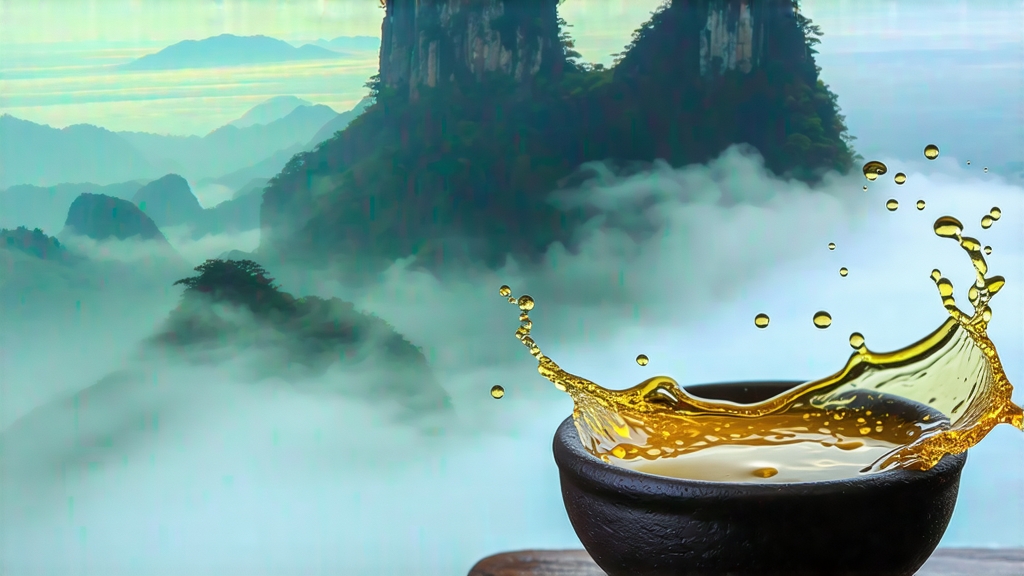
Tie Guan Yin, literally “Iron Goddess of Mercy,” is more than a tea; it is a moving dialogue between rock, mist, and human devotion that has unfolded in the granite heartlands of southern Fujian for almost three centuries. To the uninitiated it may appear simply as another curled jade-green oolong, yet every whorl of its leaf contains compressed weather reports from the Wuyi foothills, incense smoke from village temples, and the whispered aspirations of generations who have staked their livelihoods on coaxing perfume from Camellia sinensis. Understanding this cultivar means entering a culture where tea is not agriculture but autobiography, and where the farmer’s hand is considered the final, indispensable terroir.
History: From Altar to Auction Block
The most popular origin tale dates to the Yongzheng era (1723–1735). A devout farmer named Wei Yin, so the story goes, found a rusted iron statue of Guan Yin, the Bodhisattva of Compassion, abandoned in a grotto near Xiping village. After polishing the icon and installing it in a small shrine, Wei dreamed of the goddess pointing to a distant ravine where a single tea shrub shimmered in moonlight. He transplanted the bush, propagated it by cuttings, and discovered that its infusion tasted of orchids, honey, and something indefinably serene. Whether myth or marketing, the narrative cemented the link between spiritual merit and leaf quality that still governs Anxi etiquette: the first infusion of every harvest is customarily poured back to the earth as libation.
By the late Qing, Tie Guan Yin had eclipsed Song-style compressed tribute teas in Fujian’s coastal ports. European accounts from 1868 describe “Iron Buddha Tea” fetching twice the price of Keemun in Amoy (modern Xiamen), its tightly rolled pellets surviving the long voyage to Batavia and even San Francisco. The 1990s saw another inflection point when Taiwanese tea scientists introduced “green-style” light oxidation, splitting the lineage into two stylistic families that now coexist in every Anxi township.
Cultivars and Micro-Terroirs
True Tie Guan Yin is clonally descended from the original Hongxin (“red-heart”) strain, identifiable by its copper-red petiole and serrated leaf margin that angles upward like a prayer. Within Anxi County at least five micro-terroirs compete for prestige:
• Xiping – the mythic birthplace; granite soils yield a bright, lilac aroma and a buoyant mineral spine.
• Gande – higher elevation (700–900 m); mist-cooled nights slow oxidation, amplifying creamy lactones reminiscent of custard apple.
• Xianghua – terraced red clay; stronger tannic structure suitable for the traditional 30 % oxidation style.
• Longjuan – a newly certified zone where cooler springs have begun to produce “spring fragrance” lots that fetch pre-Qingming premiums.
• Huqiu – iron-rich laterite; leaves develop a distinctive metallic snap, beloved by Chaozhou chefs for cutting through oily dim sum.
Farmers further differentiate by season. Spring tea (April) is the most aromatic, autumn tea (October) the most balanced, while the undervalued summer harvest is often diverted to charcoal roasting experiments that can rival aged cliff teas in complexity.
Craft: The Choreography of Green, Red, and Smoke
Unlike Wuyi rock teas that are roasted once and left to meditate in bamboo baskets, Tie Guan Yin is a kinetic tea, its character determined by a sequence of micro-decisions made during a 36-hour window after plucking.
- Solar Withering: Leaves are spread on bamboo screens under morning sun for 20–40 minutes, depending on cloud cover. The goal is to evaporate surface moisture without bruising the cuticle, preserving the raw vegetal sweetness that will later contrast with deeper fruit notes.
- Indoor Withering & Oxidation: Screens are stacked in an air-conditioned room at 22 °C and 65 % humidity. Every half hour they are gently tossed by hand, a motion called yao qing—“shaking the green.” Cell walls fracture, polyphenols meet enzymes, and the leaf edges turn coral-red while the center stays jade. Masters listen for a rustle likened to “walking on frost” to judge readiness.
- Fixing: A 260 °C drum roaster kills the enzymes in two minutes, locking in roughly 20–25 % oxidation for modern “light